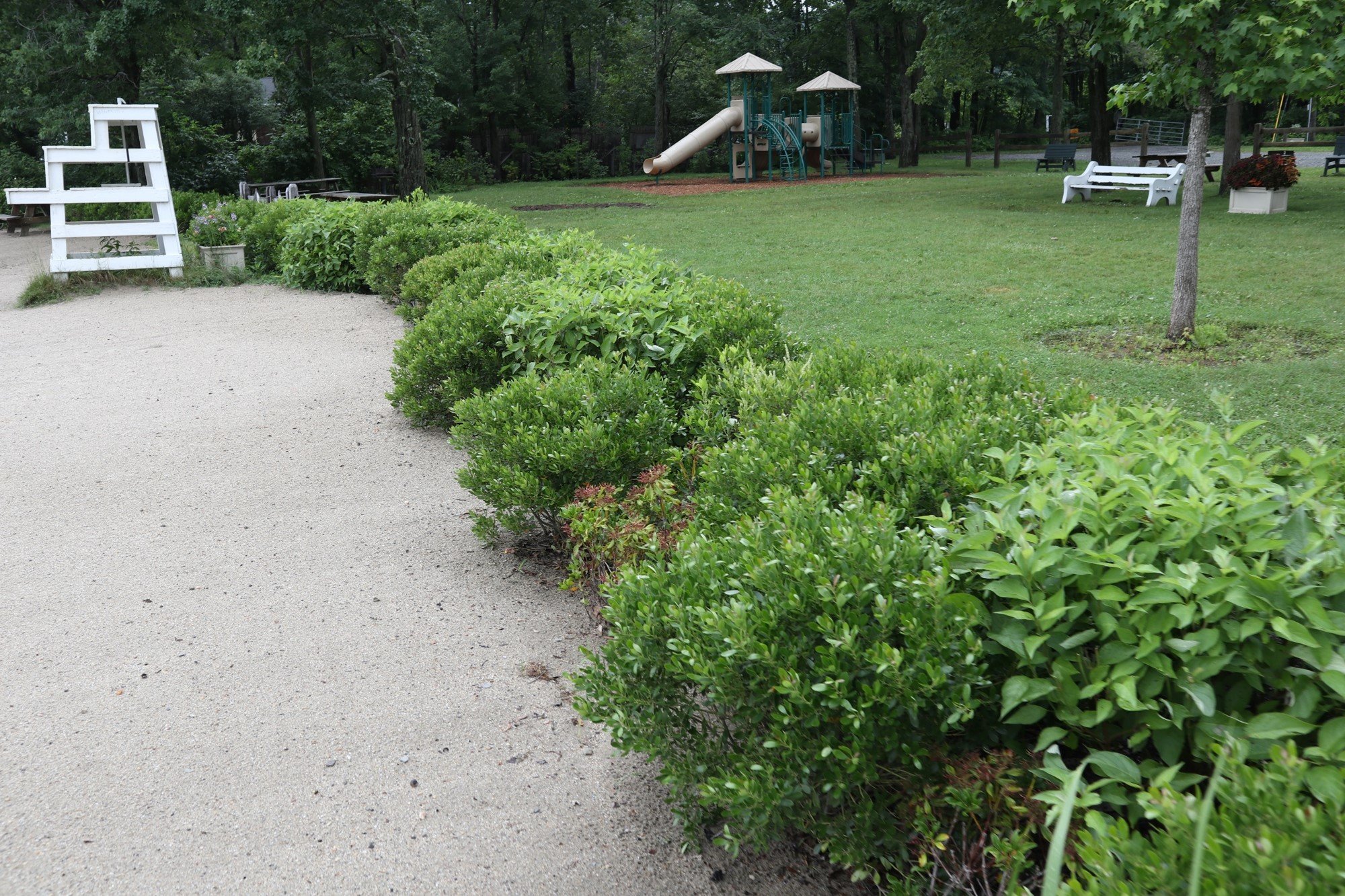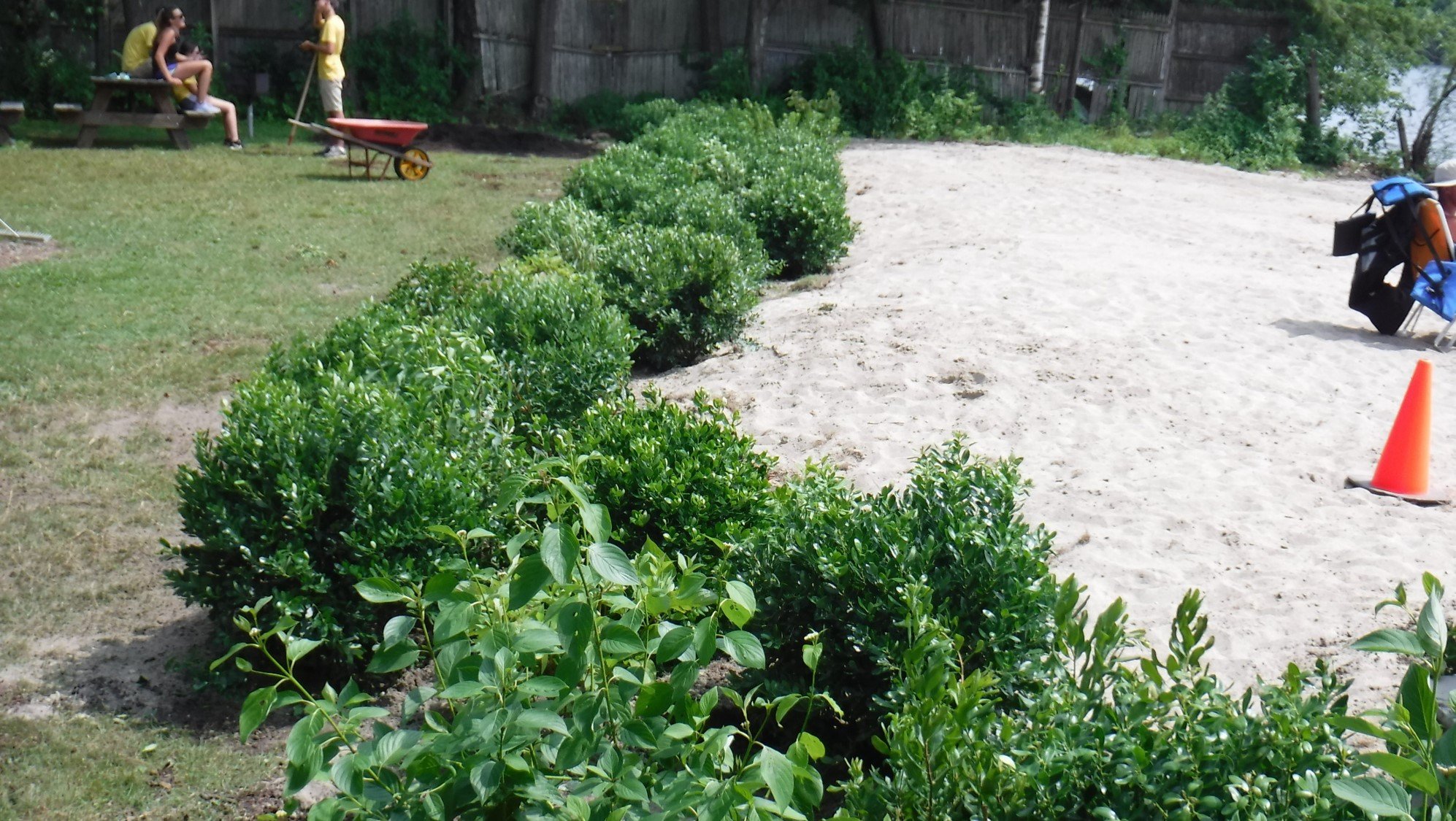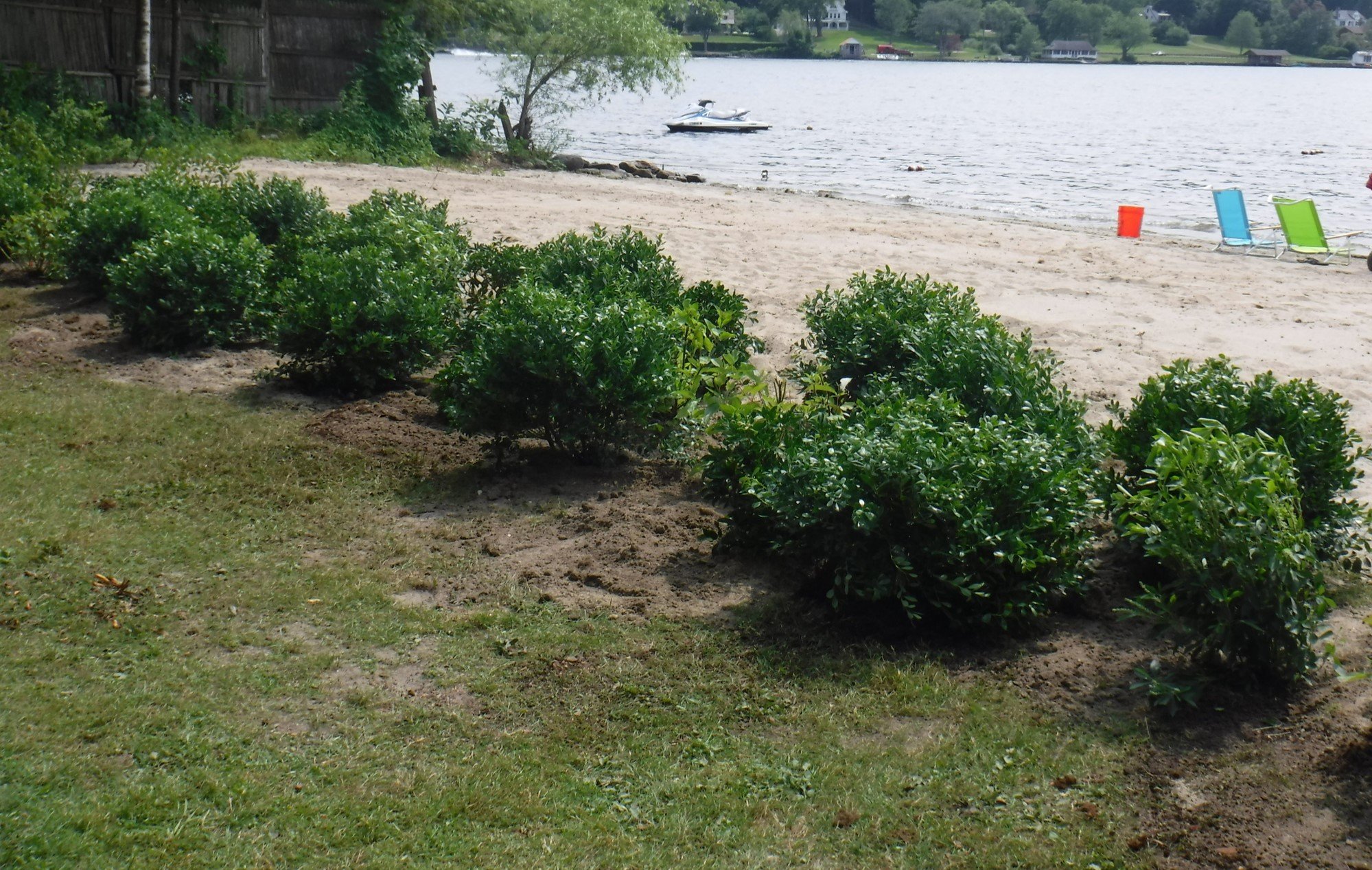Riparian Buffers - A Possible Geese Deterrent
Why are Canada Geese a Problem:
The Residential Canada Geese population are an increasing problem for lake residents and water quality. The decreasing severity of winters is making migration obsolete. Traditional methods of geese deterrence are not as effective because this year-round population behaves differently from the migrating population; however, there are still some tips and tricks that can be used to deter geese. If done consistently and used in combination, these management strategies can be effective.
If you would like suggestions of resources in designing your buffer, email info@lakewaramaug.org. To learn more about geese deterrent strategies visit the CT DEEP website and search “CT DEEP Problems with Geese”.
A Town Beach Case Study
In July of 2019, the Lake Waramaug Task Force partnered with the Town of Warren to plant a riparian buffer along the Warren Town Beach. Previously, hundreds of Canada Geese would come up onto the town beach every morning, causing lifeguards to shovel geese poop off the entire beach into the lake daily. This added excess nitrogen and phosphorus into the lake, but also caused E. Coli levels - a type of fecal coliform bacteria - to be elevated, which has negative human health effects. The Task Force and the Town came together to come up with a solution - a Riparian Buffer along the beach shoreline!
Geese like wide-open spaces right up to the lake, which allows them straight access to the water and grass. Creating continuous vegetated buffers along the waterline with small trees and shrubs decreases visibility so geese won’t feel comfortable in the area, and it breaks up their perfectly straight runway to the water. The native plants were chosen to remain at certain heights to allow view of the lake. Gates were installed to allow ambulance access and kayak access to the water, but were shut when humans were not around. The project is an example of the municipality and local nonprofits working together to solve an environmental and human health issue.
Co-Benefits of Buffers
Water Quality: Buffers can capture stormwater, infiltrating the water into the soil. Especially on beaches, It is important when choosing the species of plants to have resilient plants that can handle excess water but also drought if necessary.
Habitat for Wildlife / Pollinators: When choosing plants, we recommend native plants such as Densa Inkberry, Serviceberry, Highbush Blueberry, New Jersey Tea, and many more. All provide berries / food for birds, pollinators and other wildlife. Plants can be chosen to continue to provide a good view of the lake.
Aesthetics: The line of native plants adds a pleasant aesthetic value. Plants can be chosen to continue to provide a good view of the lake.
5 Tips for Geese Deterrentance
DO NOT FEED THE GEESE. Geese will imprint this easy food source and return regularly to the same place.
Do not dump grass or vegetative cuttings into the lake, as this provides a consistent food source that trains birds to come back to your home and provides nutrients that encourage cyanobacteria.
Try scaring the geese from your yard using a variety of methods including remote control toys, horns, whistles, lawn sprinklers or even dogs. The goal is to consistently scare them away, as they dislike expending energy to take off, which diminishes their urge to return to a location.
Riparian buffers along the shoreline are an effective strategy. If you still need access to the shoreline, gates can fill in the gaps. The important concept is that at sunrise/sunset, the geese do not see a gap they could walk to grass.
An alternative strategy is planting a ground-cover such as ground juniper (Juniperus horizontalis). The sharp unstable plant texture deters geese from walking across planted areas.





